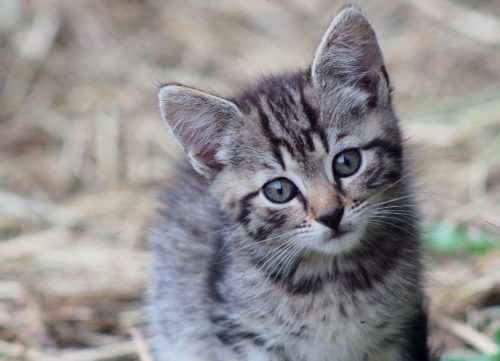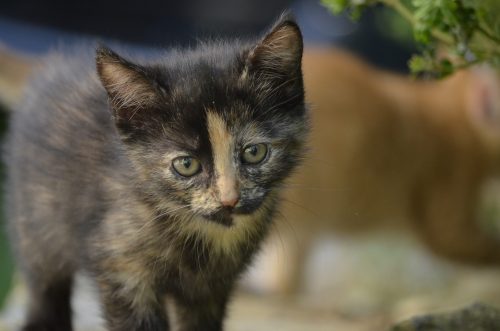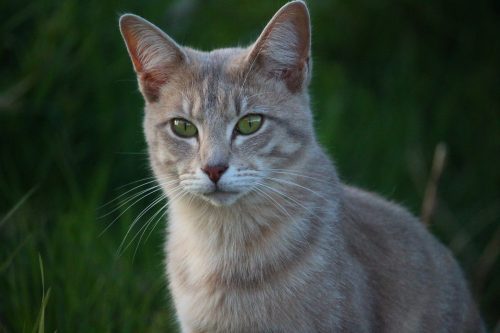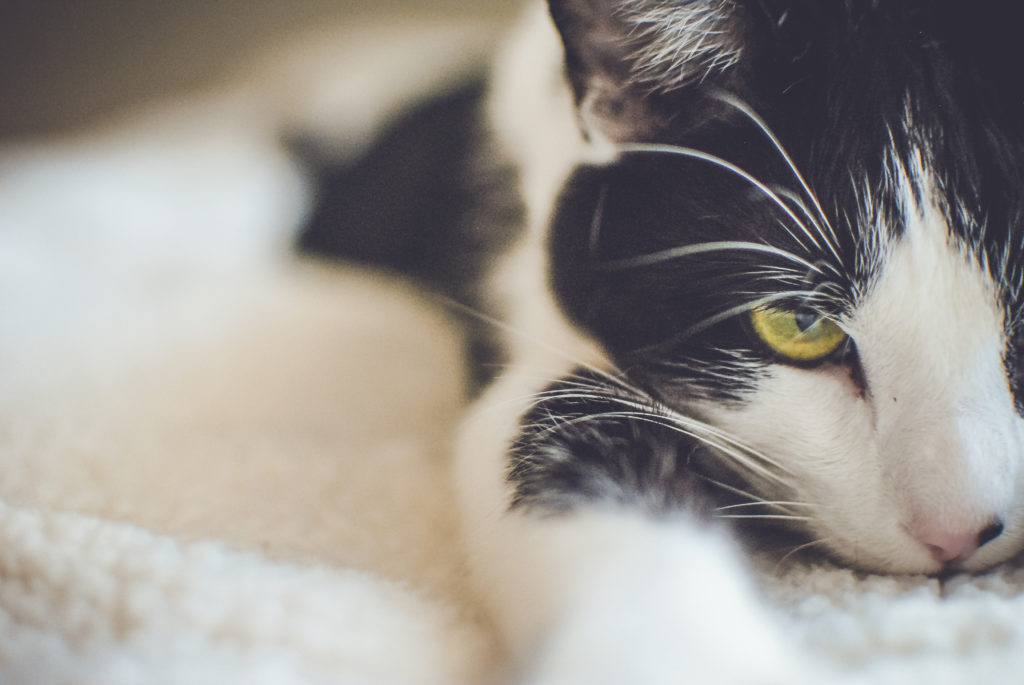Hyperthyroidism is most commonly associated with human beings, but did you know that cats can also suffer from this thyroid disorder? Hyperthyroidism in cats is a fairly common condition, and if you are a cat owner it is important to understand this condition so that you can recognize potential warning signs and symptoms early. The earlier that the symptoms are detected, the faster you can work with your veterinarian to determine the underlying cause of the symptoms, as well as the right treatment plan moving forward.
As a pet owner, it is difficult to watch your animal be uncomfortable or in pain and feel helpless to determine how to help him. By understanding common conditions that your cat may develop during his lifetime, you can equip yourself with a baseline knowledge that will help you to act quickly to seek the best treatment and help for your cat. To help you understand hyperthyroidism in cats, use this as an introductory guide that will examine what hyperthyroidism is, the most common causes of hyperthyroidism, potential symptoms your cat may exhibit when suffering from hyperthyroidism, how your veterinarian will make a diagnosis, as well as potential treatment options.
What is Hyperthyroidism in Cats?
Hyperthyroidism is a type of glandular thyroid disorder that results from the overproduction of levothyroxine. Levothyroxine is a hormone produced by the thyroid that causes the metabolism in the body to speed up considerably. Levothyroxine is also commonly known as T4. In a healthy cat, the thyroid gland is triggered to produce thyroid hormones as a response to stimulation by the pituitary gland. The pituitary gland controls hormonal responses throughout the body, which has earned it the moniker of “master gland” since it controls the hormonal responses of other glands throughout the body. The hormones produced by the thyroid glands will cause an uptick in chemical processes occurring within the cells of the body. This effect on chemical processes is especially pronounced in the processes related to the metabolism.
This is how a normal thyroid process functions. However, for a cat suffering from hyperthyroidism, an excess of levothyroxine is produced. This excess of thyroid hormones causes the cells and the body to react with an overdrive response. This overdrive response results in the metabolism rapidly kicking into high gear and increasing. This increase in metabolism results in a number of physical symptoms. Hyperthyroidism is the most common endocrine disease to occur in cats. Hyperthyroidism often appears in cats that are middle-aged to elderly. The mean, or average, age at which hyperthyroidism is discovered in cats is thirteen years of age; however, diagnosis can span cats anywhere from four to twenty-two years of age. Less than six percent of the cases of hyperthyroidism in cats occur in cats younger than ten years of age. Veterinarians and researchers have been unable to detect a genetic predisposition for hyperthyroidism at this time. With this understanding in mind, it is now possible to explore possible causes of hyperthyroidism in cats.
Causes of Hyperthyroidism in Cats
Hyperthyroidism is most often caused by an overfunctioning thyroid. This can be a genetic condition some cats develop as they age, and is not caused by an external issue, but rather an overfunctioning thyroid nodule. When a thyroid nodule is functioning above what is considered normal, it is producing an excess of thyroid hormones. This production of excessive thyroid hormones often occurs outside of the control of the pituitary gland, which attempts to keep all hormone production within the body inside of normal limits. While this is the most common cause of hyperthyroidism in cats, there are several other underlying conditions that could also be the culprit. In rare cases, the appearance of hyperthyroidism in a cat can be due to thyroid cancer. If a cat is suffering from hyperthyroidism due to thyroid cancer, there is usually a tumor present that is secreting thyroid hormones, causing the hyperthyroidism to occur as a byproduct of the cancerous tumor.
Another fairly common cause of hyperthyroidism in cats is age itself. As a cat ages, its bodily processes and functions will often shift, and in some cats, this may result in the development of an abnormally functioning thyroid. If your cat is aging and begins to develop hyperthyroidism, it is important to seek out veterinary assistance so that you can determine the right treatment plan. In addition to these causes of hyperthyroidism in cats, some pet owners and veterinarians have reported that hyperthyroidism has been caused by some types of cat food. This has not yet been validated, but it does drive home the importance of feeding your cat a food that contains healthy ingredients. Some brands of cat foods can contain harmful byproducts and ingredients that cause inflammatory responses in cats, so be sure to consult with your veterinarian to find a healthy diet for your cat if you believe his thyroid disfunction is caused, or worsened, by their diet.
Common Symptoms of Hyperthyroidism in Cats
Recognizing the common symptoms of hyperthyroidism is vital in order to seek treatment for your cat. One of the most common symptoms of hyperthyroidism in cats is weight loss due to the overactive metabolic response. Weight loss is observed in roughly ninety-five to ninety-eight percent of cats suffering from hyperthyroidism. Because of the excess amount of levothyroxine being produced, the metabolism burns through food much quicker. Not only does this often result in weight loss in cats, but it can also cause an increase in the cat’s appetite. Since their body is burning through the food they consume much faster, they will often experience an increase in hunger as their body seeks additional food to maintain its weight. In cats suffering from hyperthyroidism, an increase in appetite is observed in roughly sixty-seven to eighty-one percent of cats.
In addition to these symptoms, cats may also experience excessive thirst due to the overdrive of their metabolism. As they seek to drink more water, there is also often a correlating increase in urination. The metabolism controls a number of different responses within the body, and the overdrive response that hyperthyroidism imparts results in panting and hyperactivity in some cats. Another potential symptom a cat may experience when suffering from hyperthyroidism is diarrhea, which is the result of stress on the gastrointestinal tract. Diarrhea can quickly dehydrate and weaken a cat, so if your cat begins experiencing this symptom it is important to seek veterinary care. Some cats may also experience vomiting if they have hyperthyroidism. Vomiting is exhibited in roughly fifty percent of cats affected by hyperthyroidism.
The increased levothyroxine levels in the bloodstream affect a number of different organ symptoms, which is why the symptoms can vary significantly from cat to cat. In addition to the above symptoms, cats may also exhibit the below symptoms when suffering from hyperthyroidism.
- Unkempt appearance
- Rapid breathing
- Heart murmur/rapid heart rate
- Aggression
- Enlarged thyroid gland (this will feel like a lump in the neck of the cat)
- Thickened nails
- Difficulty breathing
- Abnormal behavior (cats may seem depressed or apathetic)
- Loss of appetite
- Weakness
- Poor body condition
- Increased shedding
Diagnosing Hyperthyroidism in Cats
If your cat is exhibiting any of the symptoms mentioned above, it is important to make an appointment with a licensed veterinarian in order to obtain a diagnosis and subsequent treatment. Hyperthyroidism is only one of the common conditions that affect older cats, other conditions include intestinal cancer, chronic kidney failure, diabetes, and inflammatory bowel disease. Many of these conditions share common symptoms with hyperthyroidism, which requires a veterinarian to do additional testing and analysis to determine the true cause of the symptoms and make the correct diagnosis.
When you make an appointment with your veterinarian, the first thing they will do is to get a comprehensive history of the cat from you. This will include their overall health, age, any prior medical conditions they have suffered from, medications they may be taking, what symptoms they are displaying, and the severity and duration of the symptoms. The veterinarian will often weigh your cat and do an initial physical examination to analyze their overall health, as well as any external factors that may indicate what they are suffering from. Is your veterinarian suspects that your cat may be suffering from hyperthyroidism, there are a number of different tests they may run to confirm their hypothesis.
Some veterinarians may choose to run a complete blood count (CBC) test, a chemistry panel, and a urinalysis. While these tests may not definitively diagnose hyperthyroidism, they will help to eliminate diabetes and kidney failure as the culprits. Many cats suffering from hyperthyroidism will return normal results on the complete blood count test and the urinalysis. However, in some cases, cats with hyperthyroidism will show an elevated level of several liver enzymes in their chemistry panel. The most reliable test veterinarians utilize to diagnose hyperthyroidism in cats is by doing a simple blood test. Often, the blood test will show the elevated levels of levothyroxine, or T4, in the bloodstream. It is important to keep in mind that sometimes these tests can be wrong. In roughly two to ten percent of cats with hyperthyroidism, their blood test will show normal T4 levels in the bloodstream. This can occur for a variety of different reasons.
In cats that are only suffering from a mild form of hyperthyroidism, their levothyroxine levels may change in and out of the normal range from day to day, which may skew the results of the blood test. Another possible explanation is that since hyperthyroidism primarily affects older cats, there is a higher probability that there is another illness or condition they are suffering from concurrently. Some concurrent illnesses can suppress the levels of levothyroxine in the bloodstream, lowering them to within normal range on the blood test. This can make diagnosing hyperthyroidism difficult to diagnose in some cats.
Treating Hyperthyroidism in Cats
There are several different treatment options available to treat cats suffering from hyperthyroidism. Each treatment option carries with it benefits as well as drawbacks. It is important to discuss all available treatment options with your veterinarian to make an informed decision that is suited to your cat. Below are the three most common treatment options for hyperthyroidism.
- Surgical Removal of the Thyroid Gland: Hyperthyroidism is often caused by a benign tumor that will affect one or both thyroid glands. This tumor is called a thyroid adenoma. In many cases, cats suffering from hyperthyroidism due to a thyroid adenoma will have a benign tumor that is well-encapsulated, making it easier to remove. However, it does require surgery to perform and the cat must be under anesthesia. Anesthesia can be dangerous in older cats since it affects their hearts and other organs, which may be weakened from age. This surgery usually results in a cure, but it can be costly upfront.
- Radioactive Iodine Therapy: This is often considered the safest and most effective treatment for hyperthyroidism in cats. Radioactive iodine therapy occurs when radioactive iodine is administered through an injection and becomes concentrated within the thyroid gland. The concentration of the radioactive iodine in the thyroid gland will destroy the tissue that is causing the elevated levels of levothyroxine in the bloodstream. This treatment does not require surgery or anesthesia, and usually, one treatment is enough to cure hyperthyroidism. However, this treatment can sometimes require hospitalization of ten to fourteen days depending on the veterinary facility and it can be quite costly.
- Oral Medication: Oral antithyroid medication is one of the most common treatment methods for cats diagnosed with hyperthyroidism. The most common medication used is called Methimazole (brand name TapazoleTM). Oral medication is extremely effective in correcting and regulating thyroid hormones to bring them within normal range and often can correct hyperthyroidism within two to three weeks from beginning treatment. Unfortunately, many cats that utilize this treatment option experience side effects, such as vomiting, sluggishness, or loss of appetite. Some may experience more serious side effects such as liver problems or blood clotting disorders. This treatment requires daily medication for the duration of their lifetime and routine blood tests to monitor thyroid hormone levels in the blood.




